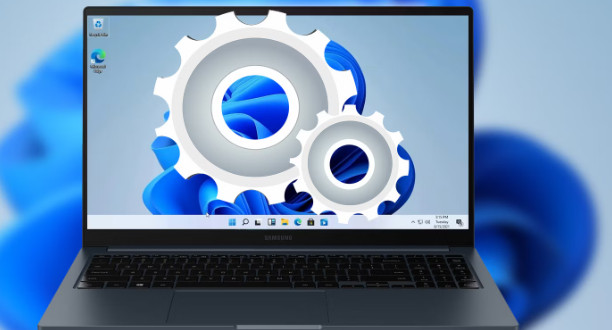
With Windows 11, the Settings program is an effective tool for managing and customizing your system. Here is a thorough how-to instruction for using it:
launching the Settings application
In Windows 11, you may launch the Settings app in a few different ways:
Start Menu: Select the Settings symbol (a gear) by clicking the Start Menu icon in the taskbar.
Keyboard Shortcut: To open the Settings app immediately, use Windows Key + I.
Quick Settings Panel: Select “All settings” after clicking the Quick Settings button on the taskbar next to the system clock.
Search Bar: In the field adjacent to the Start Menu, type “Settings” and hit Enter12.
Using the Settings App
The Settings app has multiple categories, each with a range of options:
System: Control power, storage, sound, display, and notifications.
Bluetooth & Devices: Link and control printers, other peripherals, and Bluetooth devices.
Network & Internet: Set up Ethernet, VPN, Wi-Fi, and additional network configurations.
Personalization: Change Windows’ look, including the colors, backgrounds, and themes.
Apps: Control default apps, installed programs, and add-on functionality.
Accounts: Control email addresses, sign-in choices, and user accounts.
Time & Language: Adjust the area, language, date, and time.
Gaming: Set up the game mode, captures, and Xbox Game Bar.
Accessibility: Modify Windows’ settings to improve accessibility.
Privacy & Security: Control Windows updates, security settings, and privacy23.
Important Configurations and Features
Configuration of the System
Display: Modify the scale, orientation, and resolution. This is also where you can control several screens.
Sound: Adjust volume levels, setup input and output devices, and solve audio problems.
Notifications: Tailor system alerts and app notifications to your preferences.
Power & Battery: View battery usage2, create power plans, and select battery saver settings2.
Individualization
Background: Select a picture or slideshow to use as your desktop’s background.
Colors: Choose your accent hues and turn on the dark mode.
Apply and alter themes to change the background, the noises, and the colors.
Start: Tailor the look and feel of the Start Menu.
Taskbar: Modify the taskbar’s placement and iconography2.
Applications
Features & Apps: Manage installed apps, view them, and uninstall them.
Set default programs for email, music, online surfing, and other purposes.
Windows features that are optional: add or remove them2.
Accounts
Your Information: Customize your profile photo and Microsoft account.
Accounts & Email: Create and maintain email accounts.
Configure PINs, passwords, and biometric options among other sign-in methods.
Security & Privacy
Windows Security: Get to the security options, including Windows Defender.
Privacy: Control access to the camera, microphone, location, and other privacy-related settings.
Windows Update: Verify updates, examine update histories, and adjust update preferences2.
Advice for Effective Use
Pin Settings to Taskbar: For easy access, right-click the Settings icon and choose “Pin to taskbar.”
Make a Desktop Shortcut: To make a shortcut, right-click on the desktop, choose New > Shortcut, and then enter “ms-settings:”.
Utilize Voice Commands: To open the app, say “Open Settings” if Cortana is turned on.
Using File Explorer to Gain Access: In the address bar of File Explorer, type “ms-settings:”1.
Advanced Configuration
The Settings app also gives more knowledgeable users access to more detailed system configurations:
Leave a Reply